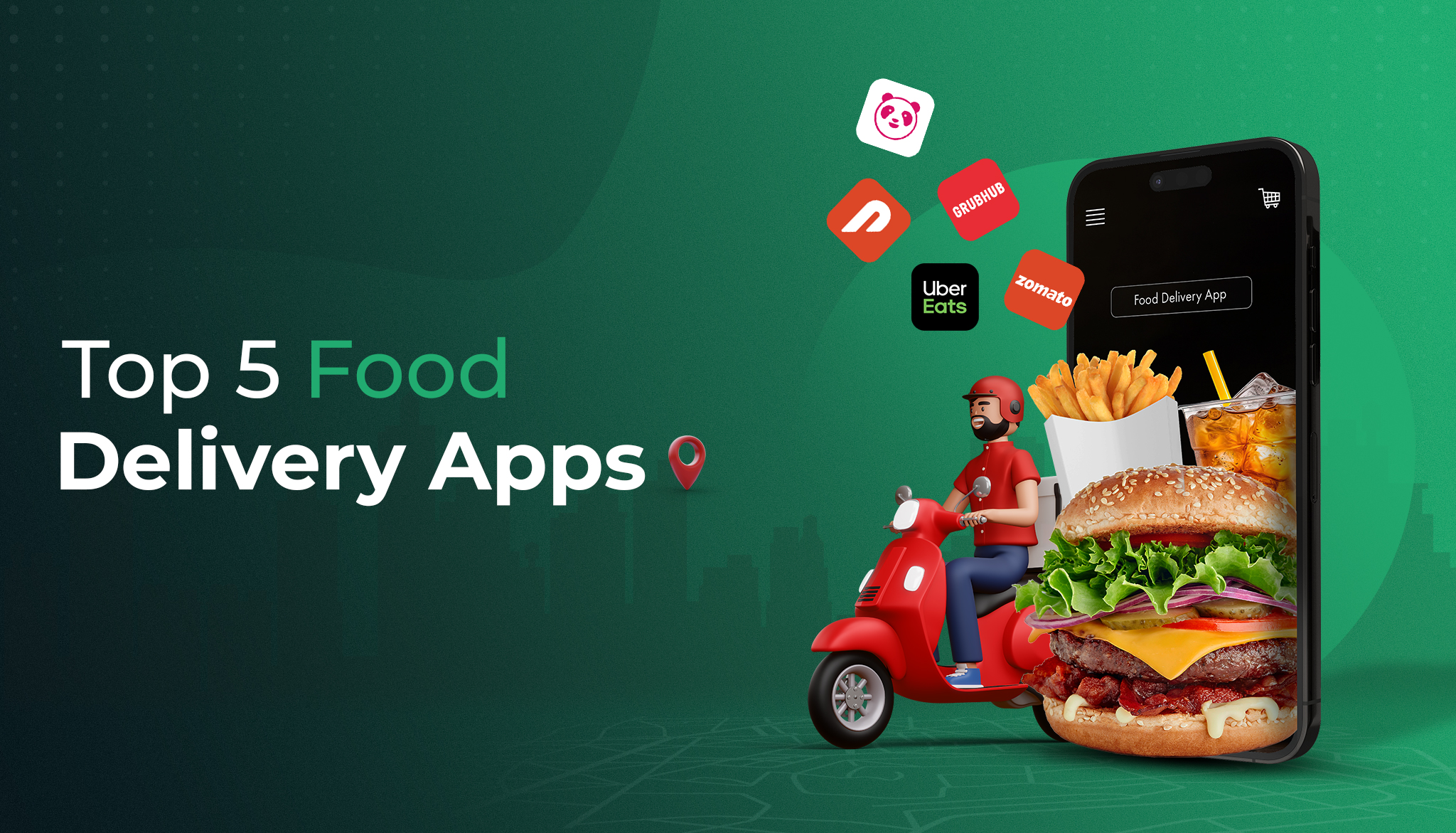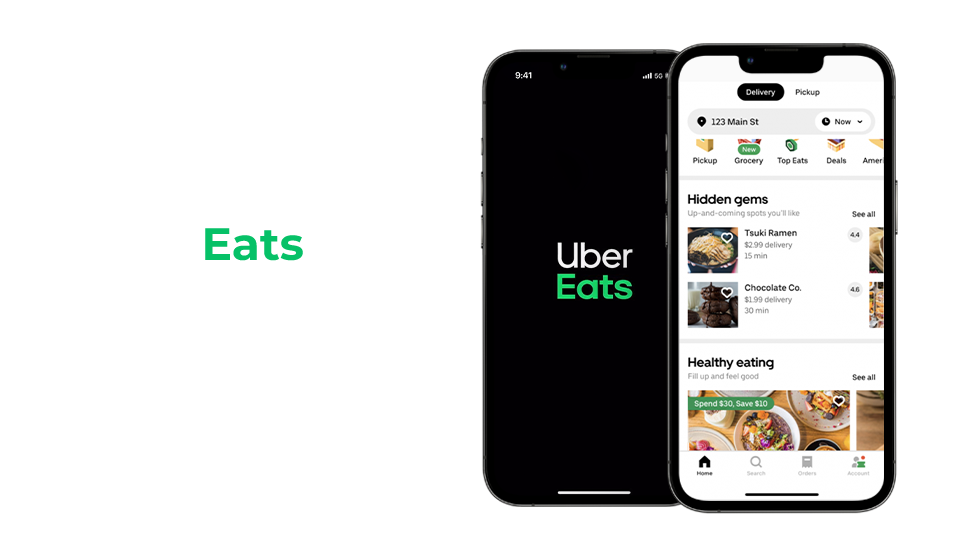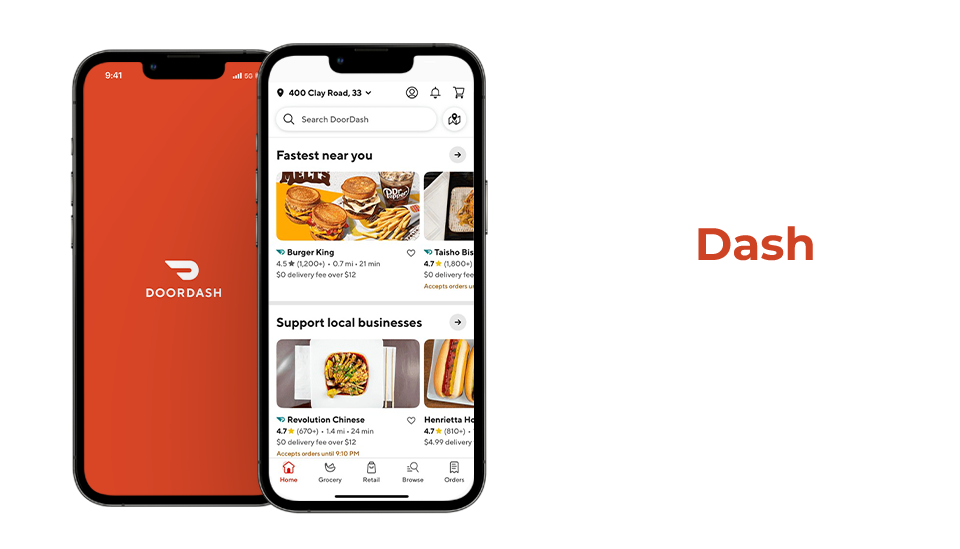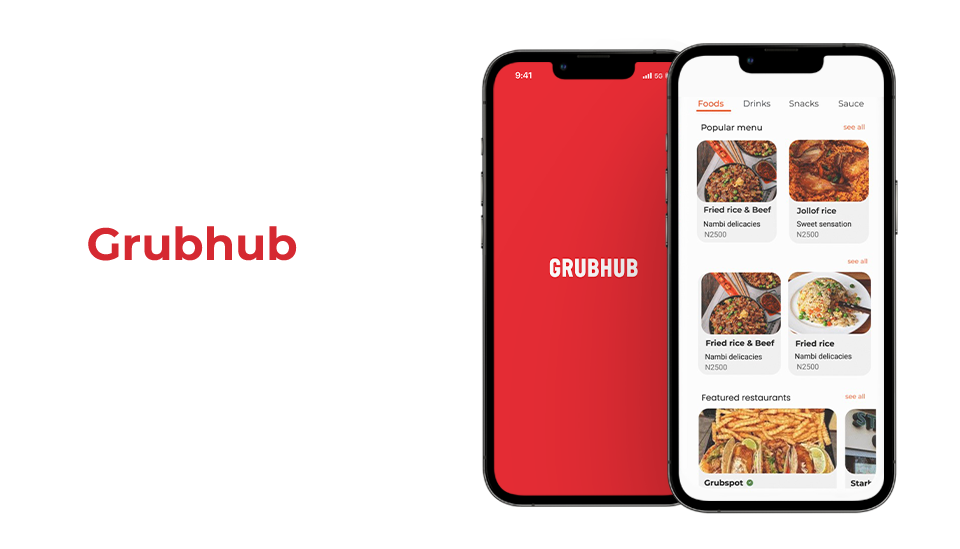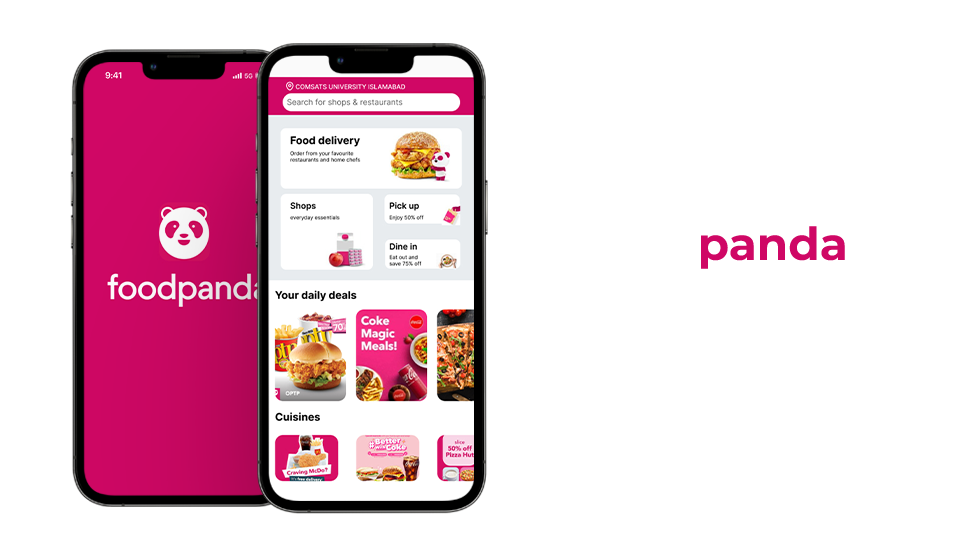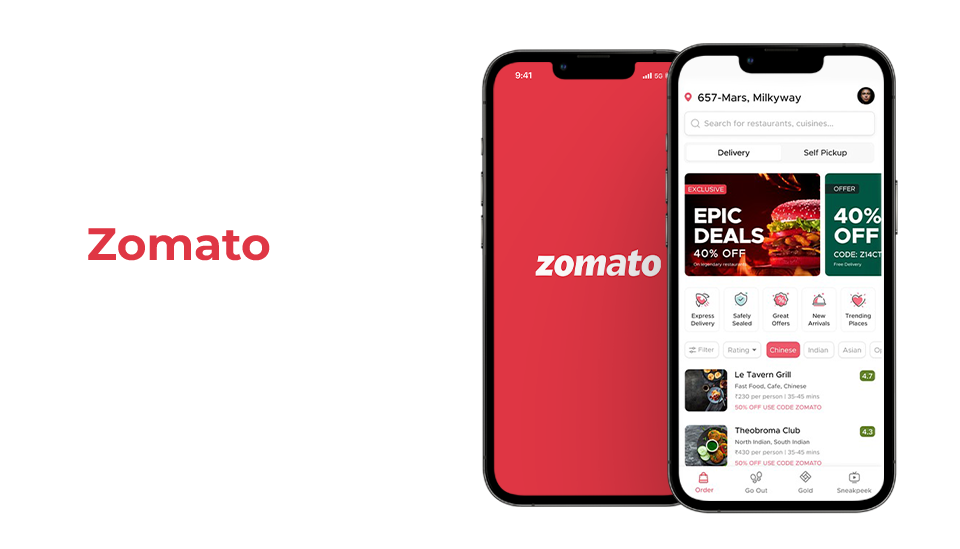During the unexpected COVID-19 pandemic, the food industry experienced a major shift, with demand for meal delivery sercvides reaching new highs. Restaurant owners found themselves at a turning point. They had two options, either go join with current online food ordering giants like Uber Eats, GrubHub, or DoorDash, or begin designing a food delivery app to match the changing demands of a changing world.
The Surge in Demand
The start of the pandemic caused a significant increase in demand for food delivery services. With restrictions on in-person dining and an increased focus on safety, consumers turned to the convenience of having meals delivered to their door. This spike in demand provided both a critical challenge and an opportunity, for both restaurant owners and Tech entrepreneurs providing food delivery app development services.
Existing Giants vs. Bespoke Solutions
Food delivery apps like Uber Eats, GrubHub, DoorDash, and many others emerged as lifesavers for many, providing a ready-made solution for breaking into the growing market. However, many restaurant owners decided to partner up with food delivery app development companies which provide mobile app development for restaurants, to make their bespoke food delivery apps.
Benefits of Food Delivery Apps
Convenience: Convenience is one of if not the biggest reason for the popularity of food delivery apps. No more waiting in long queues or beiing stuck in traffic. Food delivery apps bring the restaurant experience right to your doorstep.
Variety: You can explore diverse cuisines from local favorites to international delights, all within the reach of your smartphone.
Real-time Tracking: Staying informed about your order’s journey from the kitchen to your table with real-time tracking features are also one of the key benefits of food delivery apps.
Customization: You can customize your order to your needs, also you can tailor your orders to suit dietary preferences and restrictions effortlessly right form your app.
How Food Delivery Apps Enhance Customer Experience
The appeal of food delivery apps goes beyond just their ease of use. These platforms use technology to provide a simple and easy dining experience right from the comfort of your home. Imagine reading through a digital menu, making an order with a few touches, and excitedly waiting for the arrival of your chosen meal, this combined with the sheer convenience has led to the popularity of food delivery apps.
Essential Features of a Food Delivery App
As we look into the core of food delivery app development, we will find a few key elements that turn just a simple app into the best food delivery app. These features not only make ordering easier, but they also help to increase customer and restaurant partner satisfaction.
User Registration and Login:
It all begins with an uncomplicated user registration and login process. Provide users with a simple onboarding experience, allowing them to quickly create accounts or log in with their existing credentials. Simplify the procedure without sacrificing security to provide a warm welcome to your online cuisine world.
Restaurant Listings:
A comprehensive and carefully selected database of restaurant listings is essential for any food delivery app. It allows consumers to easily explore different cuisines, navigate menus, and discover new dining options. Implementing easy filters and search functionality to help users locate the ideal culinary fit further enhances user experience of the food delivery app.
Order Placement and Tracking:
A food delivery app’s lifeline is its smooth and straightforward order placement. Providing users with a simple yet intuitive interface for customizing orders to their needs, adding specific instructions regarding orders, and selecting convenient delivery times are a must-have for any food delivery app. Real-time order tracking and monitoring provide a further level of assurance by allowing users to follow their orders from the kitchen to their door.
Payment Integration:
Secure and easy payment integration is essential for any food delivery app. It should accept a number of payment methods, including credit and debit cards, digital wallets, and internet banking. Prioritizing user data security is of utmost importance, to build confidence in transactions and maintain a relationship of trust with your users.
Ratings and Reviews:
Any good food delivery app will encourage user participation by allowing them to rate and review their food experiences. Honest feedback not only helps other customers make well-informed choices, but it also gives essential information for businesses to improve their products according to the feedback. This creates a community of food enthusiasts who value the digital dining experience.
Customer Support:
Customer service is essential when it comes to offering reliable service to customers. Creating ways for individuals to get help, solve problems, or provide comments is necessary for any good food delivery app. A rapid and attentive customer support system not only addresses issues quickly but contributes to an overall positive user experience.
Top 5 Food Delivery Apps
Let’s look at the top five food delivery apps, each with its own taste and approach to transforming the dining experience. These platforms, including Uber Eats, DoorDash, Grubhub, Food Panda, and Zomato, have adapted to changing times and have also become leaders in bringing delicious food right to our doorsteps.
1. Uber Eats:
Uber Eats is as more than simply a food delivery app, it’s a culinary partner that transforms convenience and speed. Uber Eats, which emerged from the worldwide phenomenon of Uber, seamlessly integrates its ride-sharing expertise into the world of dining and food delivery.
Tech Stack:
- Front-end: React Native, JavaScript, HTML, CSS
- Back-end: Node.js, Python, Go
- Database: PostgreSQL, MySQL, Redis
- Cloud Infrastructure: AWS (Amazon Web Services)
Monetization Strategies:
- Commission-based Model
- Delivery Fee
- Surge Pricing
- Advertising
2. DoorDash:
DoorDash, a culinary curator in its own right, showcases the combination of both simplicity and a wide range of dining options. DoorDash was founded in 2013 and since then has become one of the largest food delivery companies in the United States. The mission of Doordash was to deliver not only meals but experiences, it has established itself as a platform that caters to modern consumers’ changing tastes.
Tech Stack:
- Front-end: React Native, JavaScript, HTML, CSS
- Back-end: Node.js, Ruby on Rails
- Database: PostgreSQL, MySQL
- Cloud Infrastructure: AWS (Amazon Web Services)
Monetization Strategies:
- Commission-based Model
- Delivery Fee
- DashPass Subscription
- Advertising
3. Grubhub:
Grubhub welcomes guests on a personalized culinary adventure, with each order serving as an episode in a unique culinary story. Grubhub, founded in 2004 by Chicago-based software engineers Matt Maloney and Mike Evans, has become a trusted friend for customers wanting a personalized eating experience, all thanks to its extensive restaurant selection and user-focused approach.
Tech Stack:
- Front-end: React Native, JavaScript, HTML, CSS
- Back-end: Node.js, Java
- Database: PostgreSQL, MySQL
- Cloud Infrastructure: AWS (Amazon Web Services)
Monetization Strategies
- Commission-based Model
- Delivery Fee
- Grubhub+ Subscription
- Advertising
4. Food Panda:
Food Panda, founded in March 2012, is an online food and grocery delivery platform owned by Berlin-based Delivery Hero, it is a well-known player in the food delivery sector, and it meets the needs of foodies with a broad menu. Food Panda has established itself as a platform that caters to the different tastes of its clients, thanks to its extensive restaurant variety and personalized recommendations.
Tech Stack:
- Front-end: React Native, JavaScript, HTML, and CSS
- Back-end: Node.js, Java
- Database: PostgreSQL, MySQL
- Cloud Infrastructure: AWS (Amazon Web Services)
Monetization Strategies:
- Commission-based Model
- Delivery Fee
- Panda Mart (For grocery delivery)
- Advertising
5. Zomato:
Zomato, founded as FoodieBay in 2008 by Deepinder Goyal and Pankaj Chaddah who worked for Bain & Company. The website started as a restaurant-listing-and-recommendation portal, which is now an online platform that goes beyond food delivery, it serves as a space for culinary exploration. Zomato, with its complete approach to researching and ordering from a wide selection of restaurants and dining establishments, has become a multinational restaurant aggregator and food delivery company.
Tech Stack:
- Front-end: React Native, JavaScript, HTML, CSS
- Back-end: Node.js, Java
- Database: PostgreSQL, MySQL
- Cloud Infrastructure: AWS (Amazon Web Services)
Monetization Strategies:
- Commission-based Model
- Delivery Fee
- Zomato Gold Subscription
- Advertising

